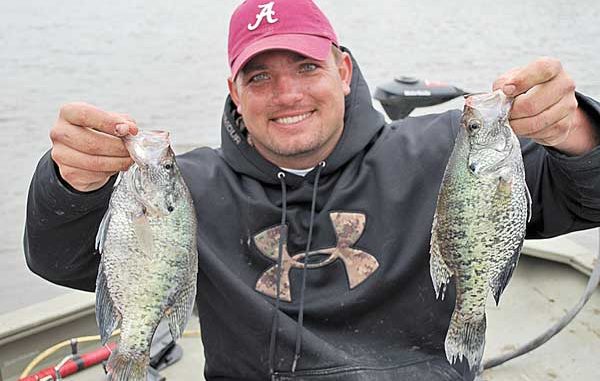
This time of year, floating saltwater baits rather than retrieving them offers practical and strategic benefits.
Hotspots come and go in fisheries management. Several things drive management controversy. One is that fishermen are very passionate about their pursuit, and like with other things that arouse passions, a lot of folks adopt the position of being an expert on what they love so much. The other thing is that to most people, fisheries management is simple: The more fish that you protect, the bigger the pile becomes that is left behind. After all, the more mature fish there are in the water, the more eggs that will be produced, and the more eggs that are produced, the more fish there will be to catch. Simple, huh? Who needs a fisheries biologist?
The fish currently in the eye of the storm is the crappie, or should I say crappies, since there are two species. Called the white perch in North Louisiana and the sac-a-lait in South Louisiana, it is a beloved food fish. In fact, it is Louisiana’s official state fish.
What the talk is about is whether a need exists for minimum size limits and reduced creel limits for the fish. Currently, crappies are managed with a 50-fish-per-person creel limit and no minimum-size limit.
The nature of the crappie beast is that they tend to have notoriously unstable populations. Under the right conditions in a water body, they will have a very successful spawn. This produces what is called “a dominant year-class.” Usually spawns in the years following this one are not as successful, probably due to competition, crowding and poor reproduction.
As the dominant year-class gets older, fishing and natural mortality take their toll, until uncrowded conditions favor the production of another dominant year-class. This seems to work on about a four-year cycle.
The crappie cycle is more pronounced in small lakes and ponds than in larger reservoirs. It is also more noticeable in lakes and reservoirs than in rivers and back-swamp overflow waters. The flooding effects of rivers into these areas produces, for reasons not clearly understood, more stable and quite a bit larger populations of crappies.
Fishermen, of course, don’t like up-and-down cycles. They want populations of their favorite fish to be high all the time.
In attempts to please anglers and to even out the crappie cycle, biologists in many states have overseen the use of minimum sizes and reduced creel limits. The results were very often not been what was expected. A case study of crappie management in Texas illustrates the point.
The state of Texas placed a minimum size limit of 10 inches on crappie statewide, except in Toledo Bend Reservoir, in 1990. A 25-fish limit was also put on crappies.
Texas Parks and Wildlife Department biologists attempted to determine the effects of the regulations by comparing the pre-regulation fishery (1986 to 1989) in Sam Rayburn Reservoir with the fishery in the 1991-1997 period, after regulations were put in place.
The reservoir’s crappie fishery was also compared to the one in Toledo Bend, which did not have a 10-inch minimum size regulation until 1997. The two reservoirs are only 40 miles apart.
In both reservoirs, the biologists used half-inch mesh trap nets to sample the crappie population. The crappies captured were placed in three categories: 5-8 inches, 8-10 inches and 10 inches and larger. Biologists also interviewed fishermen at boat ramps and counted, weighed and measured their fish catches.
The results of the study showed that in Sam Rayburn Reservoir, the size of the crappies harvested post-regulation increased, but the total harvest in pounds per acre of water decreased by 16 percent.
They noted that an increase in numbers of crappie in the reservoir occurred during the post-regulation period. They were unsure of how much of the increase, if any, was due to the minimum size limit. Toledo Bend Reservoir, which had no minimum size and a 50-fish bag limit, had a similar increase.
During the pre-regulation periods for Sam Rayburn, the average size of crappie harvested was 9.8 inches long and the fish were primarily age 2 or 3. The post regulation average harvest size was 11.3 inches, and most of the harvest was fish aged 3 or 4 years old. Growth rates for crappies remained the same in the pre- and post-regulation periods.
Concerning the reduction in bag limit, the biologists reported that the study demonstrated that the 25-fish bag limit was not biologically effective. In both the pre- and the post-regulation periods, the majority of the harvests were fewer than five crappie per angler per trip. Only 1.2 percent of crappie anglers actually harvested 25 fish. To have a measurable impact on fish harvests and, thereby, fish populations, the creel limit would have to be dramatically reduced below 25.
Generally, biologists agree that minimum-size limits are most useful in areas where crappie growth is fast, the natural death rate is low, pre-regulation harvests are high and where fishermen obey the law well.
Jerald Horst is author of the newly published Trout Masters: How Louisiana’s best anglers catch the lunkers. For ordering information, visit www.lasmag.com, or call (800) 538-4355.


